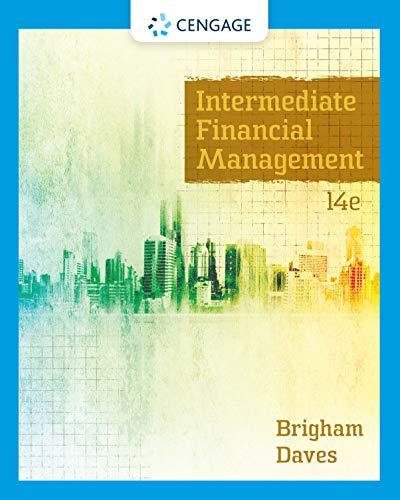Question
Table 1 shows the expected after-tax operating cash flows for each project. All projects are expected to have a 4 year life. The projects are
Table 1 shows the expected after-tax operating cash flows for each project. All projects are expected to have a 4 year life. The projects are different in size (the cost of initial investment), and their cash flow patterns are different. They also differ in risk as indicated in the above table.
The capital budget is $20 million and the projects are mutually exclusive.
Capital Structures
Debt 50%
Preferred Equity 10%
Common Equity 40%
100%
Cost of capital
Given the following data:
- The firm's tax rate is 35%.
- The firm has issued a 10% semi-annual coupon bond with 8 years term to maturity. The current trading price is $990.
- The firm has issued some preferred stock which pays an annual 10% dividend of $100 par value, and the current market price is $105
- The firm's stock is currently selling for $36 per share. Its last dividend (D0) was $3, and dividends are expected to grow at a constant rate of 6%. The current risk free return offered by Treasury security is 2.5%, and the market portfolio's return is 12%. The firm has a beta of 1.2. For the bond-yield-plus-risk-premium approach, the firm uses a risk premium of 3%.
- The firm adjusts its project WACC for risk by adding 1.5% to the overall WACC for high-risk projects and subtracting 1.5% for low-risk projects.
The firm executives have favored IRR in the past for making their capital budgeting decisions, some source says NPV was better than IRR, another source says that MIRR is also better than IRR.
Question
- What is the firm's cost of debt?
- What is the cost of preferred stock for the firm?
- Common Equity
- What is the estimated cost of common equity using the CAPM approach?
- What is the estimated cost of common equity using the DCF approach?
- What is the estimated cost of common equity using the bond-yield-plus-risk-premium approach?
- What is the final estimate for r?
- What is the firm's overall WACC?
- Should the firm should use the single overall WACC as the hurdle rate for each of its projects?
| Table 1 | A | B | C | D |
| t | - | - | - | - |
| 0 | 19000000 | 20000000 | 14000000 | 18000000 |
| 1 | 8000000 | 11000000 | 5700000 | 3600000 |
| 2 | 8000000 | 10000000 | 5700000 | 7600000 |
| 3 | 8000000 | 8000000 | 5700000 | 5600000 |
| 4 | 8000000 | 4000000 | 5700000 | 5600000 |
| Risk | Average | High | Low | Average
|
Step by Step Solution
3.39 Rating (152 Votes )
There are 3 Steps involved in it
Step: 1
incorporating calculations and addressing key considerations Cost of Debt Beforetax cost of debt Yie...
Get Instant Access to Expert-Tailored Solutions
See step-by-step solutions with expert insights and AI powered tools for academic success
Step: 2

Step: 3

Ace Your Homework with AI
Get the answers you need in no time with our AI-driven, step-by-step assistance
Get Started


